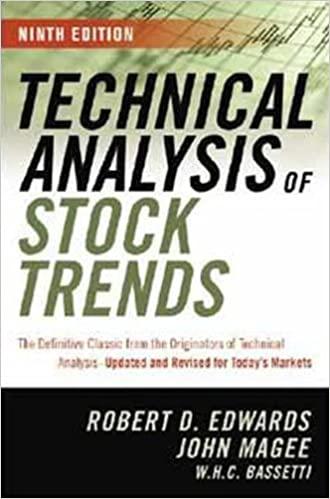Lack of mark scheme to check answers/attempt to understand, any help would be useful. Thank you!


1. Answer the following questions. a) Indicate true or false to the following statements (no explanations needed): i) Mergers are always successful because corporations can foresee the synergies perfectly well in advance. ii) Agency costs arise from the senior management's inability to observe the behaviour of the shareholders. [5 marks each; 10 marks] b) Suppose the total value of a firm 'Sigma Trading' is 150 million. Sigma's total value of debt is 50 million, and the interest rate (before tax) on its debt is 4 percent, while its cost of equity is 12 percent. The effective corporate tax rate is 30 percent. By assuming that the Modigliani-Miller Theorem with corporate taxes holds, answer the following questions. i) What is the debt-equity ratio of Sigma? ii) What is the after-tax WACC (weighted average cost of capital) of Sigma? [5 marks each; 10 marks] c) A firm has the following capital structure: 100 million of equity (market value) with 100 million shares outstanding, and 100 million of debt. The beta of the firm's stock is 1.6. The firm's cost of equity is 10 percent, and the yield on riskless bonds is 2 percent. There is no tax. Assuming that the firm can borrow at the risk free rate and that both CAPM (Capital Asset Pricing Model) and the Modigliani-Miller theorem hold, answer the following questions. i) What is the share price of the firm? ii) What is the WACC of the firm? iii) What should be the expected return on the market portfolio? iv) Suppose the firm changes its capital structure so that its debt increases to 140 million, and the equity decreases to 60 million. What should be the firm's cost of equity after the change? [5 marks each; 20 marks] 3. Suppose the portfolio of a large institutional investor Animal has a beta of 1.25, and the standard deviation of the rate of return on its portfolio is 15 percent and its expected rate of return is 15 percent. The portfolio of another institutional investor 'Beast' has a beta of 0.75. The market portfolio may be expressed as a portfolio comprising the portfolios of Animal and Beast. Suppose there is a firm called 'Cunning corporation', whose stock's beta is 2 and it can borrow at the risk free rate, which is 2.5 percent. Cunning's equity value is 1.5 million and its debt is 1 million. The present value of Cunning's tax shield is 0.3 million. Assuming that both CAPM and the Modigliani-Miller theorem with corporate taxes hold, answer the following questions. a) What is the expected return on the market portfolio? [5 marks] b) What is the standard deviation of the rate of return on Beast's portfolio? [5 marks] c) What is the weight attached to Beast if we express the market portfolio as a portfolio comprising the portfolios of Animal and Beast? [5 marks] d) What is the after-tax WACC of Cunning? [5 marks] 1. Answer the following questions. a) Indicate true or false to the following statements (no explanations needed): i) Mergers are always successful because corporations can foresee the synergies perfectly well in advance. ii) Agency costs arise from the senior management's inability to observe the behaviour of the shareholders. [5 marks each; 10 marks] b) Suppose the total value of a firm 'Sigma Trading' is 150 million. Sigma's total value of debt is 50 million, and the interest rate (before tax) on its debt is 4 percent, while its cost of equity is 12 percent. The effective corporate tax rate is 30 percent. By assuming that the Modigliani-Miller Theorem with corporate taxes holds, answer the following questions. i) What is the debt-equity ratio of Sigma? ii) What is the after-tax WACC (weighted average cost of capital) of Sigma? [5 marks each; 10 marks] c) A firm has the following capital structure: 100 million of equity (market value) with 100 million shares outstanding, and 100 million of debt. The beta of the firm's stock is 1.6. The firm's cost of equity is 10 percent, and the yield on riskless bonds is 2 percent. There is no tax. Assuming that the firm can borrow at the risk free rate and that both CAPM (Capital Asset Pricing Model) and the Modigliani-Miller theorem hold, answer the following questions. i) What is the share price of the firm? ii) What is the WACC of the firm? iii) What should be the expected return on the market portfolio? iv) Suppose the firm changes its capital structure so that its debt increases to 140 million, and the equity decreases to 60 million. What should be the firm's cost of equity after the change? [5 marks each; 20 marks] 3. Suppose the portfolio of a large institutional investor Animal has a beta of 1.25, and the standard deviation of the rate of return on its portfolio is 15 percent and its expected rate of return is 15 percent. The portfolio of another institutional investor 'Beast' has a beta of 0.75. The market portfolio may be expressed as a portfolio comprising the portfolios of Animal and Beast. Suppose there is a firm called 'Cunning corporation', whose stock's beta is 2 and it can borrow at the risk free rate, which is 2.5 percent. Cunning's equity value is 1.5 million and its debt is 1 million. The present value of Cunning's tax shield is 0.3 million. Assuming that both CAPM and the Modigliani-Miller theorem with corporate taxes hold, answer the following questions. a) What is the expected return on the market portfolio? [5 marks] b) What is the standard deviation of the rate of return on Beast's portfolio? [5 marks] c) What is the weight attached to Beast if we express the market portfolio as a portfolio comprising the portfolios of Animal and Beast? [5 marks] d) What is the after-tax WACC of Cunning? [5 marks]








